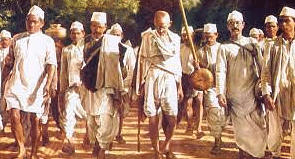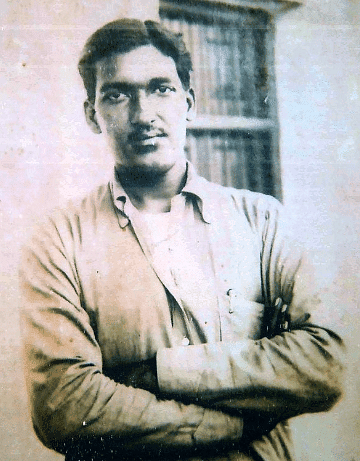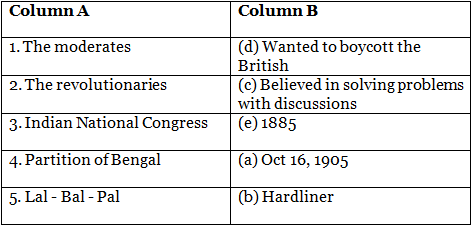Freedom Struggle - 1 Class 5 Worksheet Solutions SST
Q1: Multiple Choice Questions (MCQs)
(i) ___________ believed in a revolutionary approach.
(a) Mahatma Gandhi
(b) Dadabhai Naoroji
(c) Bal Gangadhar Tilak
(d) None of these
Ans: (a)
Gandhi's system of Satyagraha was based on nonviolence, non-cooperation, truth and honesty. Gandhi used nonviolence in India's freedom struggle as the main weapon and India became independent from British rule.
(ii) Who among the following was a member of the moderate group in the Indian National Congress?
(a) Bal Gangadhar Tilak
(b) Lala Lajpat Rai
(c) Dadabhai Naoroji
(d) Bipin Chandra Pal
Ans: (c)
Dadabhai Naoroji was a moderate leader who believed in resolving issues through dialogue, meetings, and requests to the British government.
(iii) The Indian National Congress was founded in
(a) 1912
(b) 1905
(c) 1885
(d) None of these
Ans: (c)
On 28 December 1885, the Indian National Congress was founded at Gokuldas Tejpal Sanskrit College in Bombay, with 72 delegates in attendance. Hume assumed office as the General Secretary, and Womesh Chunder Bonnerjee of Calcutta was elected president.
(iv) What was the main reason given by the British for the Partition of Bengal in 1905?
(a) Religious divisions between Hindus and Muslims
(b) Administrative inconvenience
(c) Economic reforms
(d) To promote Indian unity
Ans: (b)
Though Lord Curzon claimed administrative reasons for Bengal's partition, the real motive was to divide Hindus and Muslims and weaken their unity.
(v) Which famous slogan did Bal Gangadhar Tilak use to motivate Indians during the freedom struggle?
(a) "Inquilab Zindabad"
(b) "Vande Mataram"
(c) "Freedom is my birthright and I will have it"
(d) "Swaraj is our goal"
Ans: (c)
Bal Gangadhar Tilak, a prominent hardliner, used this slogan to emphasize that Indians must actively demand their freedom from British rule.
Q2: True & False
(i) The Indian National congress was started by W. C. Bonnerjee.
(ii) Ashfaqullah Khan was a revolutionary.
Ans:
(i) True
(ii) False
EduRev Tips:
(i) The Indian National congress was started by W. C. Bonnerjee. He was the co-founder and first president of Indian National Congress.
(ii) Ashfaqullah Khan the revolutionary – also a poet writing under the pen name of 'hasrat' and 'warsi', and a dreamer who had wanted to open a school.

Q3: Fill in the blanks
(i) The British partitioned Bengal to divide the ________.
(ii) The British followed the policy of ______ and rule.
Ans:
(i) Muslims and Hindus
(ii) divide
Q4: Match the following

Ans:
Q5: Short Answer Type Questions
(i) Who founded the Indian National Congress?
Ans: The party was formed by a civil servant named Allan Octavian Hume who was a Britisher. The party was formed with a total of 72 delegates from all the provinces and presidencies of India. They all met in Bombay from the 28th to 30th December 1885.
(ii) What was the approach of the moderates? How were they different from the hardliners?
Ans: Moderates believed in constitutional and peaceful methods. They aimed at administrative and constitutional reforms and wanted more Indians in the administration. To bring political awareness among the people they held meetings and discussions on social, economic and cultural matters.
Differences between Moderates and hardliners in realizing their objectives are: As such, the Moderates believed in the methods of the constitution as the attempts carried the mark of individuality and were isolated from the masses. The hardliners believed in the power of the masses.
(iii) Explain the Divide and Rule policy of the British.
Ans: In 1857, the 'Great Mutiny' broke out in which the Hindus and Muslims jointly fought against the British. This shocked the British government so much that after suppressing the Mutiny, they decided to start the policy of divide and rule.
|
33 videos|419 docs|50 tests
|
FAQs on Freedom Struggle - 1 Class 5 Worksheet Solutions SST
| 1. स्वतंत्रता संग्राम क्या है? |  |
| 2. स्वतंत्रता संग्राम में कौन-कौन से प्रमुख नेता थे? |  |
| 3. भारतीय स्वतंत्रता संग्राम का मुख्य कारण क्या था? |  |
| 4. स्वतंत्रता संग्राम के दौरान कौन-कौन से आंदोलन हुए थे? |  |
| 5. स्वतंत्रता संग्राम का परिणाम क्या था? |  |





















